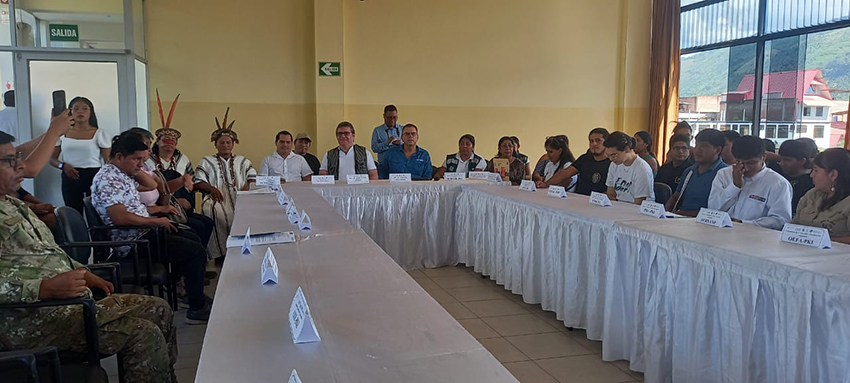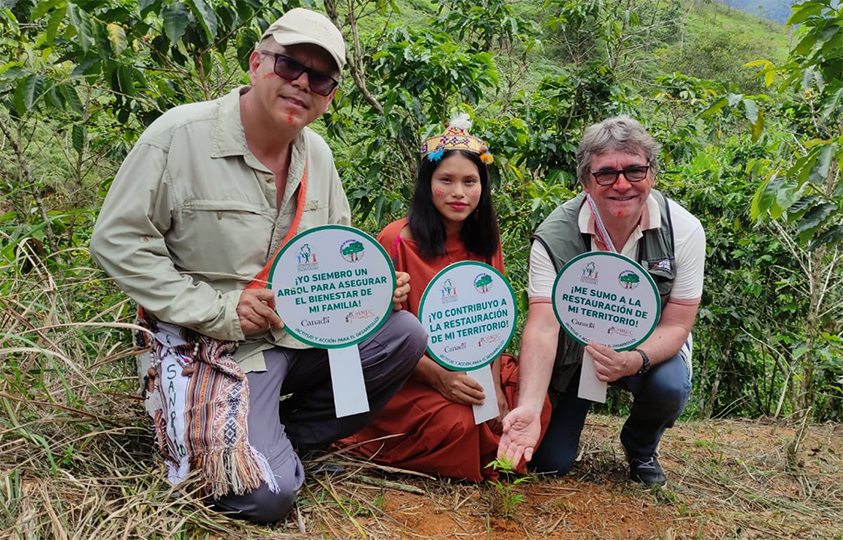Climate Action Unit participates in Forums for adaptation and mitigation to climate change of 2 Model Forests in Peru

- The visit provides technical support to two of the four governance platforms for forest landscapes in that country and that are part of the Latin American Network of Model Forests -RLABM-
Monday, January 30, 2023. Recognizing the importance of the role played by the actors within a territory in favor of the good management of natural resources in climate change scenarios, is part of the objective of 2 international forums in which he participated the Climate Action Unit (UAC) of CATIE (Tropical Agricultural Research and Higher Education Center) in Peru. CATIE (Centro Agronómico Tropical de Investigación y Enseñanza) en Perú.
The forum "Effective and Participatory Governance for Adaptation and Mitigation to Climate Change in the Pichanaki Model Forest" was held between January 17 and 18 in the Santiago Antúnez de Mayolo auditorium of that community. While the second forum was held from January 19 to 20 in the Auditorium of the Coffee Interpretive Center, in the Villa Rica Model Forest.
CATIE, since 2003, has held the presidency of the board of directors of the Latin American Network of Model Forests -RLABM- currently in charge of Roger Villalobos, a UAC researcher, and implies the promotion and facilitation of training, exchanges and learning processes between governance platforms. "This visit is to provide technical support to two of the four forest landscape governance platforms in Peru that are part of our Network, within the framework of the RESTAURAcción project, financed by the Government of Canada and carried out by the UAC," Villalobos commented.
“Through participatory governance platforms, such as Model Forests, local institutions and organizations come together and define collaboration strategies, joint projects and synergies through which they optimize the use of their capacities and resources to improve the management of their territories. and its natural resources, particularly the strategies for the conservation, restoration and sustainable management of forest ecosystems”, said Fernando Carrera, a researcher at the UAC and manager of the RLABM, who accompanied the mission.
The Pichanaki Model Forest's main objective is to ensure the conservation of biodiversity and the environmental, social, economic and cultural sustainability of the ecosystems and communities involved in the territory of the district. The Model Forest approach promotes the active participation of the different relevant actors and interested parties, in the creation of consensus on the management of natural resources. The Pichanaki district is located in the Central Jungle of Peru, in the province of Chanchamayo, Department of Junín. It has an area of 124,770.5 ha, and is a diverse territory in terms of ecosystems and life zones.
For its part, the territory of incidence of the Villa Rica Model Forest, is included within the Oxapampa Asháninca Yánesha Biosphere Reserve, it is unique in terms of administration by a local government and production under agroforestry systems where their actions seek to achieve comfort economic, social and environmental for the population that interacts in the territory.
These two governance platforms from Pichanaki and Villa Rica were formed and integrated into the RLABM in 2015 and 2017 respectively.
Finally, Villalobos commented that "it has been very motivating to learn about the progress and achievements in the governance of protected forests and productive forest and agroforestry systems, as well as in various restoration interventions in productive spaces, which incorporates the various native cultures and colonies. who inhabit these territories. The consolidation and empowerment of groups of women with productive enterprises is striking. The resources of the RESTAURAcción project have been carried out excellently in this region and possible opportunities for future collaboration with CATIE were discussed”.

Written by:
Esteban Rodríguez Zamora
Communicator
Information and Communication Technology CATIE
Tag:MESCyT



